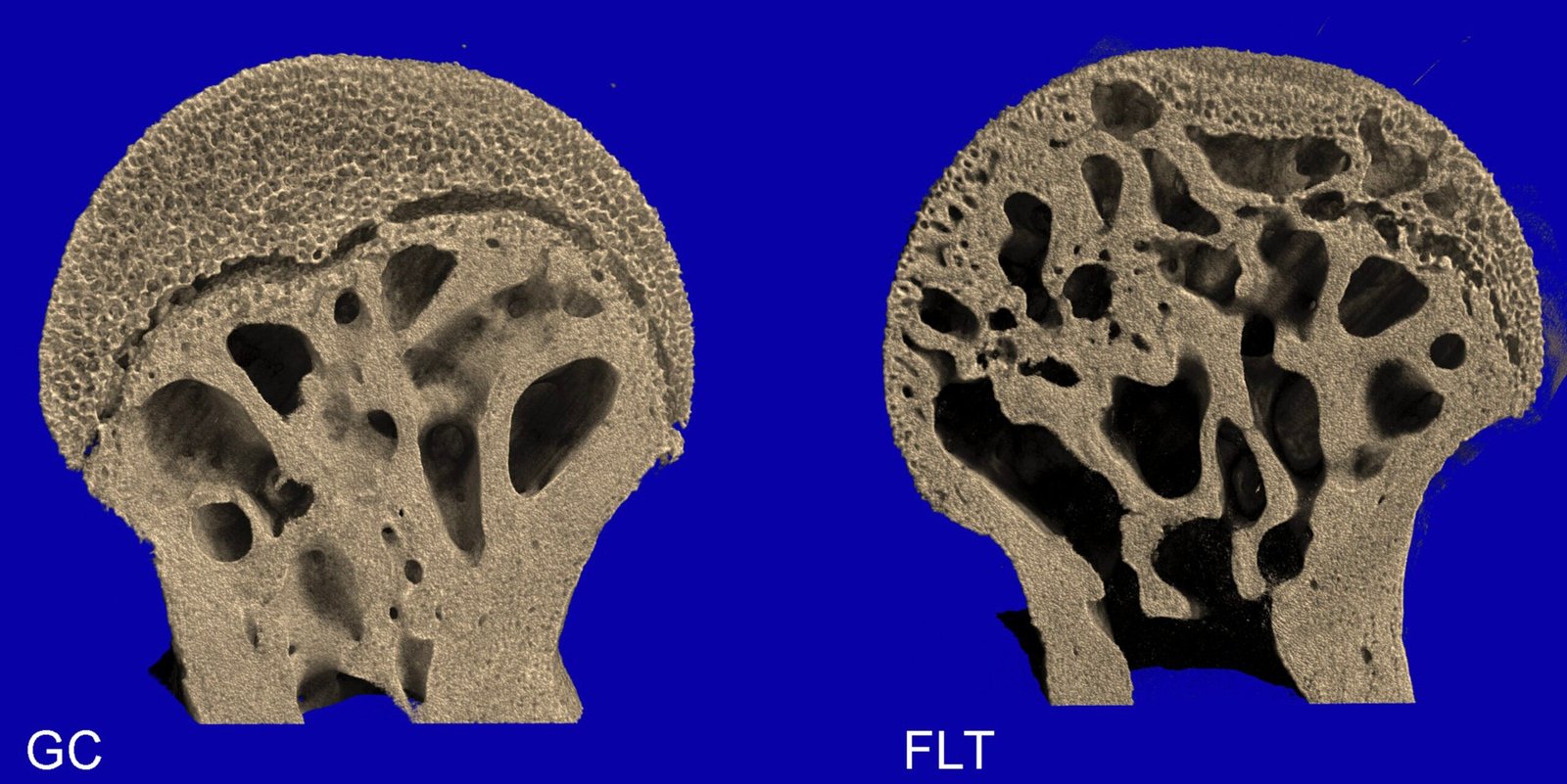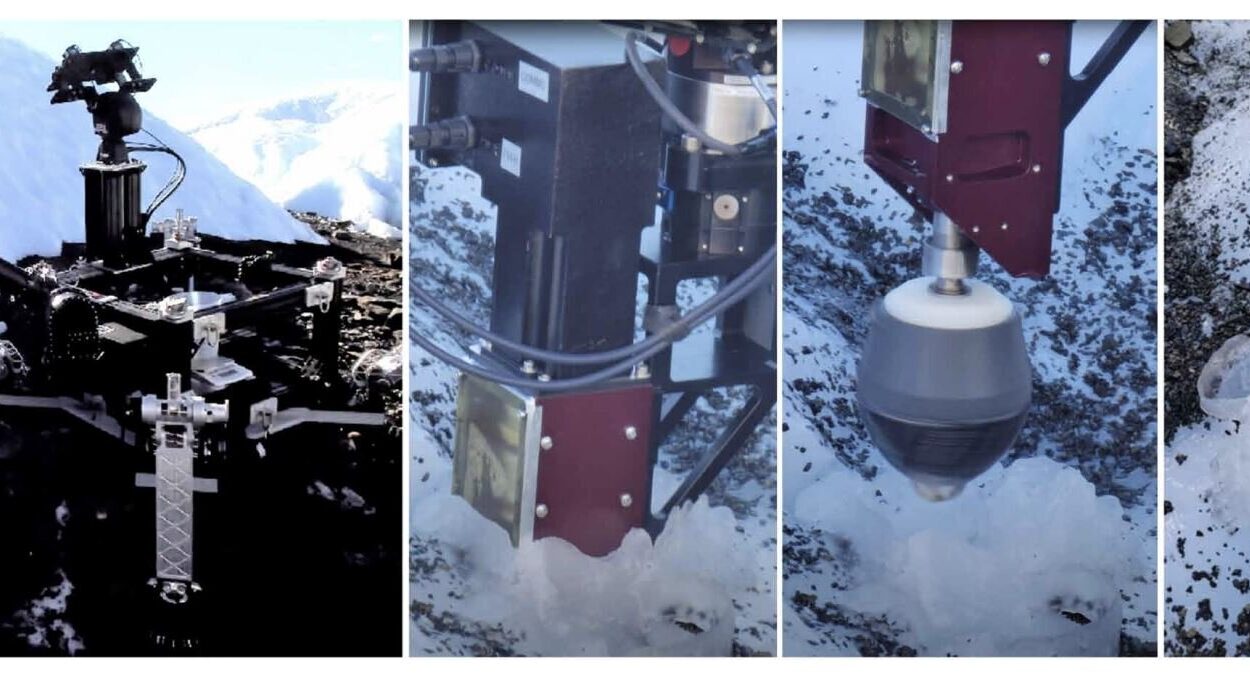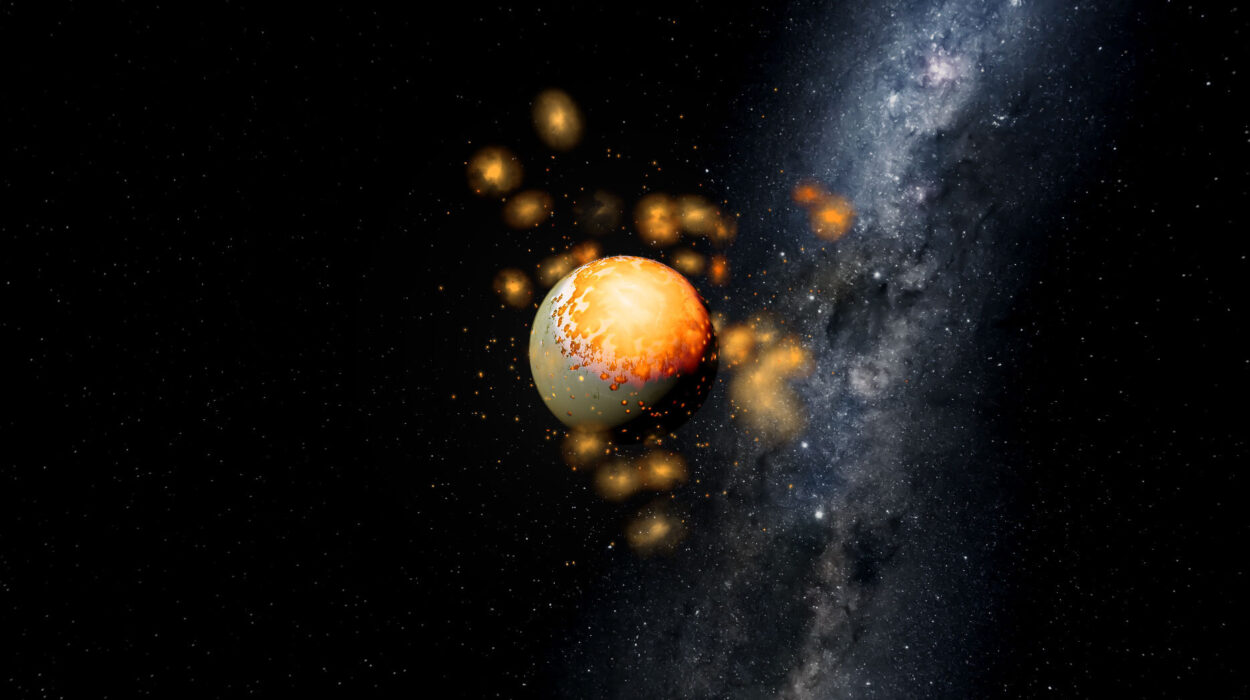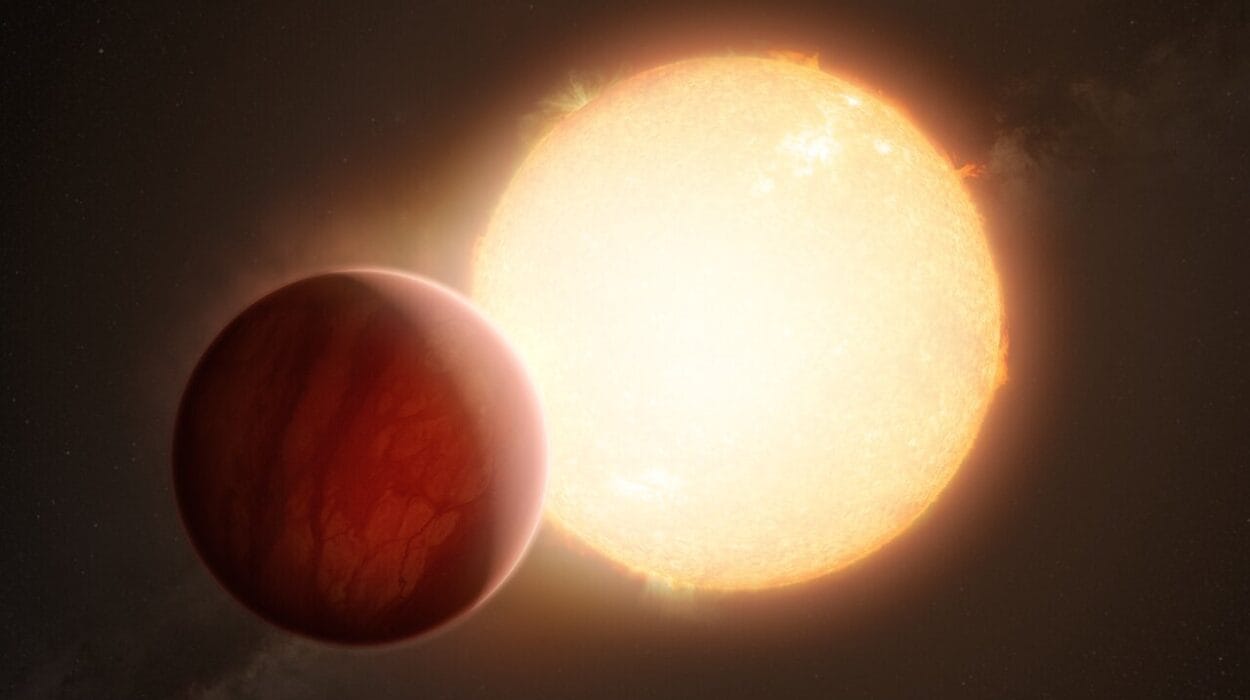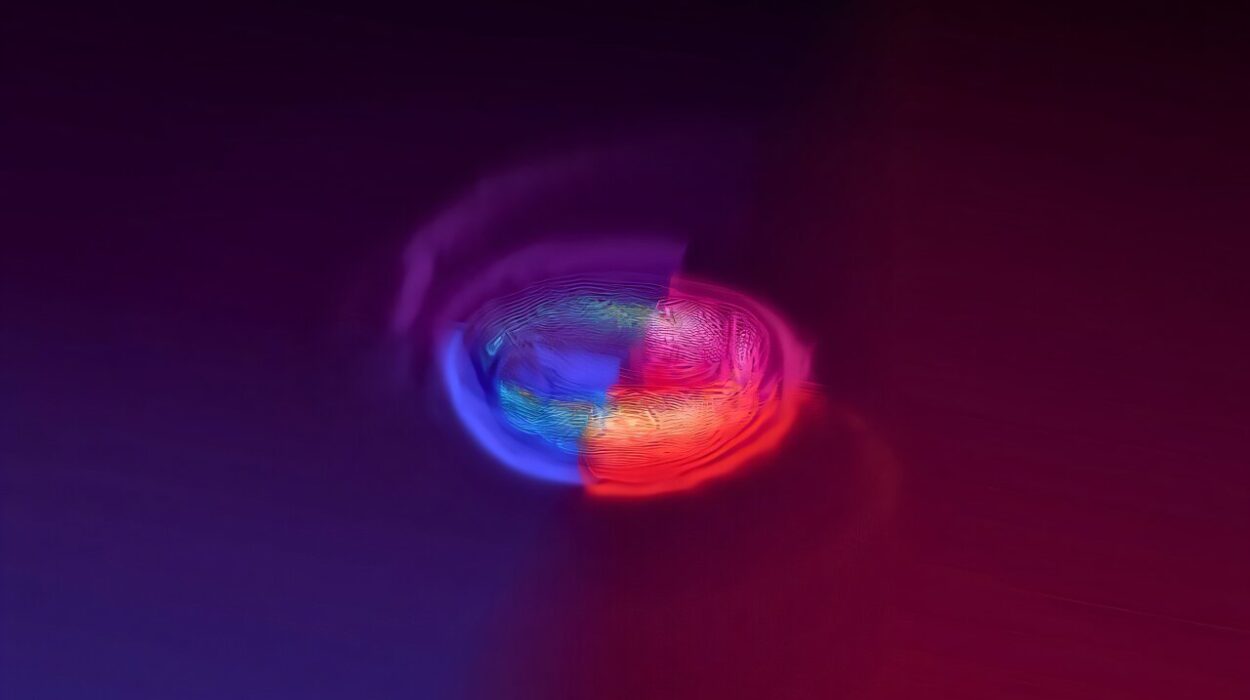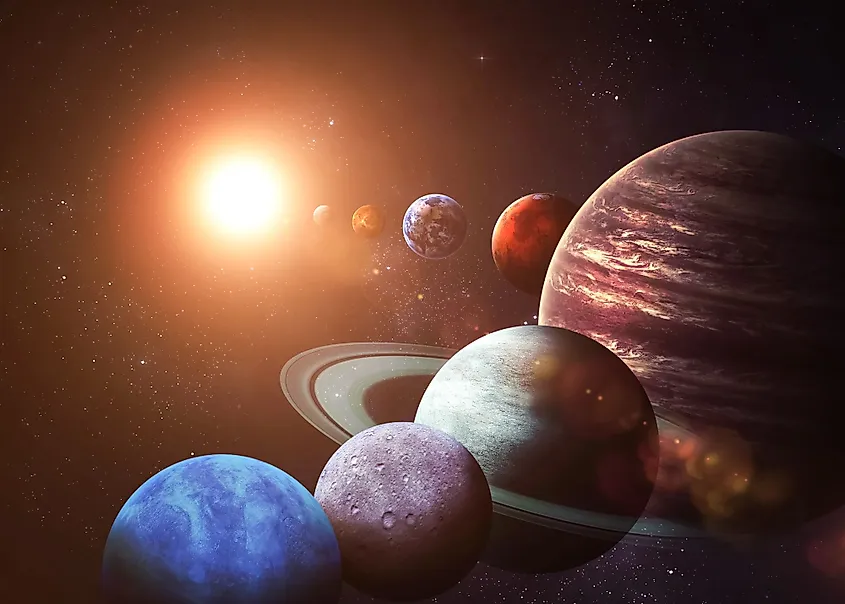In a fascinating new study, biomedical engineers at the Blue Marble Space Institute of Science, in collaboration with bio-scientists from NASA Ames Research Center, have uncovered intriguing findings about bone loss in test mice aboard the International Space Station (ISS). Their research, published in the open-access journal PLOS ONE, shows that these test mice experienced significant bone loss in their femurs when compared to control mice on Earth. This discovery adds to the growing body of evidence highlighting the effects of space travel on the health of living organisms, particularly in relation to bone mass and density.
Background: The Ongoing Problem of Bone Loss in Space
For years, scientists have known that human astronauts suffer from bone loss while aboard the ISS. On average, astronauts lose around 1% of their bone density each month. Over the course of a multi-month mission, this could equate to the loss of decades’ worth of bone mass—a concerning issue given that bone density is crucial for overall health and mobility. While physical exercise aboard the ISS, such as weightlifting and resistance training, can help mitigate this loss to some extent, it is not a complete solution. Exercise, while important, has yet to fully prevent the decline in bone mass caused by the microgravity environment of space.
The human experience of bone loss during space travel has led researchers to wonder how other species, especially those with different body structures and weight-bearing systems, might be affected by the same environment. This is where the recent study on mice comes into play.
The Unique Study on Mice in Space
In this novel experiment, the team of biomedical engineers and bio-scientists decided to investigate how the microgravity conditions aboard the ISS affect creatures that walk on four legs, as opposed to humans who are bipedal. While humans primarily bear weight through their spines, hips, and legs, four-legged animals, such as mice, distribute this weight differently, with gravity impacting their hips and legs more directly. By studying the effects of space on mice, the researchers hoped to better understand whether bone loss in space is purely a result of reduced gravity or whether other factors, such as space radiation, also play a role.
To carry out the study, a group of test mice was sent to the ISS for 37 days. When they returned to Earth, the researchers conducted detailed analyses of their bone mass and density. What they discovered was both surprising and insightful.
Key Findings: Significant Bone Loss in Femurs
The most striking finding of the study was the significant bone loss observed in the femurs of the test mice. The femur, being the largest and strongest bone in the body, is critical in supporting weight. This bone bears much of the load for both bipedal and quadrupedal creatures, making it a key focus for studies of bone density. The researchers found that the femurs of the mice that had spent time aboard the ISS showed a marked decrease in bone mass and density.
Interestingly, bone loss was not observed uniformly across all bones. The bones forming the hip joint—located above the femur—showed much less reduction in mass and density. This suggested that the loss in femur bone mass was most likely a direct result of the altered gravitational environment, where the lack of gravity caused the femur to bear less load and, therefore, to lose bone density. The hip joint, being less affected by gravity in both space and on Earth, seemed to retain its bone mass much more effectively.
These findings provide further evidence of the role gravity plays in maintaining bone density. In a microgravity environment, where gravity is virtually nonexistent, bones like the femur, which are accustomed to supporting weight under the influence of gravity, undergo a kind of disuse atrophy. Without the usual forces acting on them, these bones begin to lose their density and mass.
The Role of Space Radiation: A Potential Factor?
While gravity remains the most likely culprit for the observed bone loss, the study also raises important questions about the role of other space-related factors, such as space radiation. Space radiation is a constant presence in the vacuum of space, and it has been known to affect various biological systems. Previous studies have shown that radiation can have detrimental effects on human tissues, DNA, and overall health, but its specific impact on bone mass has not been fully understood.
The researchers did not focus directly on radiation in this study, but the possibility that space radiation contributes to bone loss cannot be ruled out. The effects of radiation in space are cumulative and can potentially accelerate bone loss, especially over longer missions such as those that may be required for a journey to Mars. As of now, the role of space radiation in bone health remains an area for further exploration, and this study only scratches the surface of the issue.
Implications for Long-Term Space Travel
The findings of this study have significant implications for future long-duration space missions, especially those aimed at Mars or beyond. As humanity looks toward the possibility of sending astronauts to other planets, the effects of space travel on the human body must be thoroughly understood and addressed. The bone loss experienced by astronauts in low Earth orbit is only a small part of the problem. Prolonged missions in space, far from Earth’s protective gravity and atmosphere, present even greater challenges.
For example, while exercise regimens are critical for mitigating bone loss, they may not be sufficient for long-term missions. Additionally, dietary changes and attempts to shield astronauts from space radiation may offer limited benefits in preventing bone density reduction. As the current study suggests, a more comprehensive solution will likely be required to protect astronauts from the detrimental effects of space travel on their bones.
What Can Be Done?
Given the findings of the current study, researchers are exploring a variety of approaches to combat bone loss in space. Some strategies being considered include:
- Enhanced Exercise Programs: While exercise alone cannot solve the problem, improving and diversifying exercise regimens could help mitigate bone loss. New technologies, such as advanced resistance training equipment and virtual reality-based exercise systems, may allow astronauts to more effectively simulate weight-bearing activities.
- Pharmacological Solutions: Researchers are investigating the use of drugs that could help maintain bone density during space missions. Certain medications, such as bisphosphonates, could potentially slow down bone loss by inhibiting the activity of bone-resorbing cells.
- Artificial Gravity: One promising solution is the development of artificial gravity systems that could simulate the effects of Earth’s gravity on astronauts. By creating centrifugal forces inside a rotating spacecraft, astronauts could experience a semblance of gravity, which might help preserve bone mass.
- Radiation Shielding: As space radiation continues to be a potential threat to astronaut health, better shielding technology could help mitigate some of the negative effects on bones. Advanced materials and radiation-blocking technologies are essential for long-term space missions.
- Dietary and Nutritional Adjustments: A diet rich in calcium and vitamin D is essential for maintaining bone health. Research into space-friendly foods that could support bone density, as well as the potential use of supplements, could prove valuable in counteracting the effects of microgravity.
Conclusion: A Step Toward Understanding Space’s Impact on Life
This study on mice aboard the ISS represents a significant step forward in understanding the impact of space travel on living organisms. By comparing the bone loss experienced by quadrupedal creatures with that of humans, scientists can refine their understanding of how microgravity, space radiation, and other factors contribute to the degradation of bone mass.
As humanity plans for future missions beyond low Earth orbit, such as the ambitious goal of reaching Mars, solving the problem of bone loss in space will be crucial. Whether through enhanced exercise regimens, pharmacological interventions, or innovative technologies like artificial gravity, researchers are working tirelessly to develop solutions that will ensure the health and safety of astronauts on long-term missions.
In the grand scheme of space exploration, understanding how to preserve bone health in space may seem like a small challenge, but it is one that holds profound implications for the future of human exploration beyond our home planet.
Reference: Rukmani Cahill et al, 37-Day microgravity exposure in 16-Week female C57BL/6J mice is associated with bone loss specific to weight-bearing skeletal sites, PLOS ONE (2025). DOI: 10.1371/journal.pone.0317307
